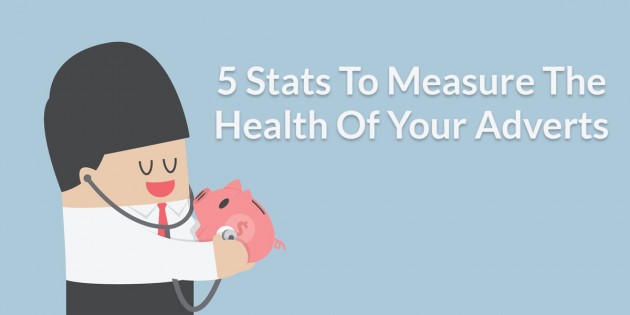I think you’ll all agree with me when I say that paid search marketing is one of the few inbound marketing strategies that requires constant attention at a micro level. For example, after I write this blog post and publish it, there is little else I need to do or check, in fact I’ll probably never edit it again.
My current Google, Yahoo or Twitter ad campaigns, however, I’ll be checking statistics and performance on a regular basis.
With each platform presenting you more columns and statistics than you can shake a stick at, it can be hard to know what to track and measure on a daily basis.
Whenever I check the status of any PPC campaigns, these are my 5 go to stats:
-
Total spending (daily and monthly)
The first thing I’ll check is my daily and monthly spend. Understanding how much I spend per day and month provides me a guideline and helps me spot any abnormal days where I may be spending too much.
For example, my daily spend could be around $7-$10, but if I spot a few days where spending hits $25, this is a potential red flag and may reveal that I need to further investigate my campaign as something is not quite right.
-
Impression share
Impression share calculates how many impressions an ad served divided by the total amount it was entitled to receive. The percentage is based on an ads’ targeting parameters, bid, keywords and Quality Score:
Source: Google
I tend to shoot for 70%-75% impression share for each advert, if it falls below that, I’ll investigate to see what’s going on.
-
Clicks (daily and monthly) and click-through rates
I treat clicks the same way as I do my spending. I’ll look at the daily and monthly ad clicks to give myself a benchmark of what to expect each time I login. Once again, if clicks fall below the current benchmark, I treat it as a red flag and investigate further.
Paying attention to the click-through rate is important to know whether an ad has gone past its sell by date. Every advert you run has a finite lifetime, as the days or weeks roll by, prospects become fatigued by your ads and stop interacting all together.
If you serve an advert to a prospect 8 times and they haven’t clicked once, will showing them another 10, 20 or 50 times change their mind? Probably not. Not so long ago Retargeter revealed that click-through rates decline overtime:
Soon as my click-through rates drop, I consider whether it’s time to pull the plug on the ad or if I need to make some changes.
-
Conversion rate
For most people, conversion rate is at the top of their monitoring list. While certainly an important metric to follow, a good conversion rate and ROI is only possible by monitoring and reacting to the stats mentioned already.
Matchup your conversion rate against your actual sales to ensure there are no major inconsistencies. This will help you understand the true cost of your campaign and whether they are successful.
If all my stats are within reason but conversions are low, I’ll start by investigating the copy and check my ads’ Quality Score or relevance score when using Facebook.
-
Hire ninjas to spy on my competition
I don’t really hire ninjas, they are too expensive!
But seriously, each one of us can learn something from our competitors’ marketing efforts. If they’ve made a change to their landing page, added new landing pages to their site or increased spending on a certain platform, it means whatever they are doing is working.
On the flip side, if they have stopped using certain platforms or gave up on promoting specific products, it could be a sign that something isn’t working.
When researching competitors, add a pinch of salt to all your findings. A lot of them will have no idea what they are doing and may incorrectly allocate funds to projects with little idea on what they are actually doing.
Once a month I’ll take a look at my competitors to see what they are doing differently and see what I learn from their changes.
Summary
If you’re not tracking and measuring your PPC campaigns on a regular basis, it will take a lot longer to find winning strategies to grow your business. I check a number of different stats each day, but for me the above are the most important at the micro level.
My objective is to find consistency in statistics over time, and when anomalies occur, I treat them as a warning sign and further investigate. Measuring this way allows me to keep on track of ads and quickly identify problems as soon as they arise.
Are you measuring on a daily basis, if so, what are you looking at?
Nick Bridges
Latest posts by Nick Bridges (see all)
- Facebook Releases 8 New Standard Events - November 14, 2018
- Facebook Pixel Changes 2018 - October 11, 2018
- Writing Compelling Ad Headlines that People Will Click - September 12, 2016





